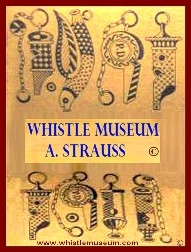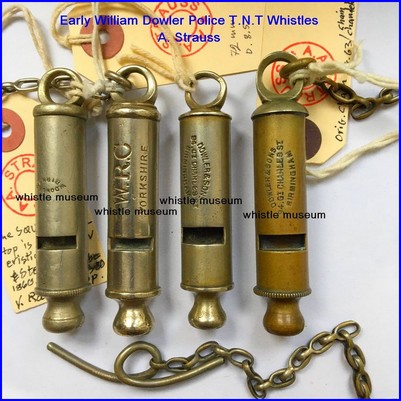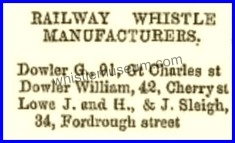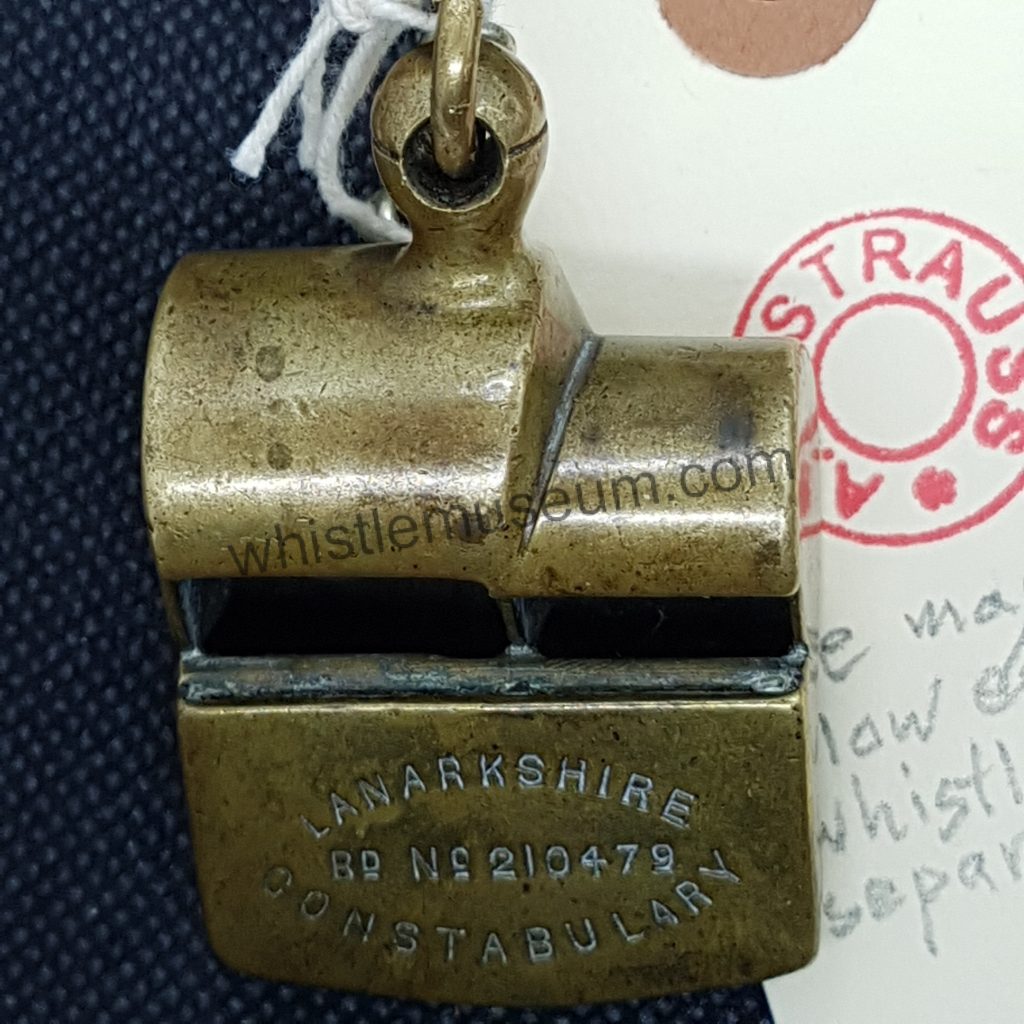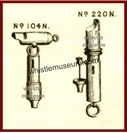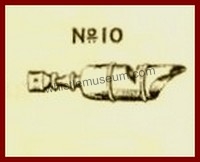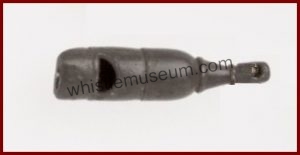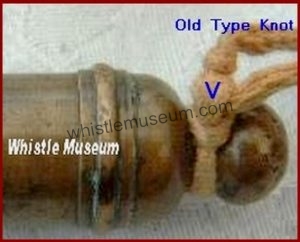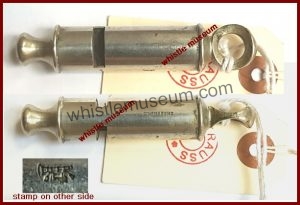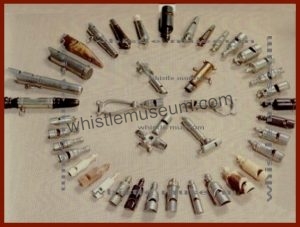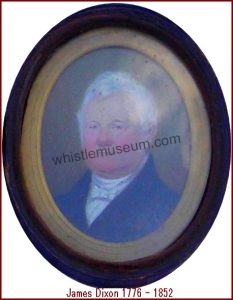Intro
Early British companies that produced whistles did not advertise their whistles, and, in fact, had many lines of other product categories. These whistles – known at that period as “Calls” – were a marginal category in terms of the company’s general revenue or “core” manufacturing line. Some changed their main line of products during the 19th century.
Today we learn about whistles from various sources, namely archival sources such as newspapers mentioning incidents of fire or theft. Other sources include books and other printed articles, some directories, censuses from 1841 onward, exhibitions, registered patents and designs, silver hallmarks or Lozegne marks, coins and buttons, museum archives, paintings, genealogy websites, church birth and death certificates, online forums on various topics, and – often times – from private collectors and whistle scholars.
To the best of our knowledge, the first British catalog to include whistles was published in 1870 by Yates and several foreign publishers advertising British-made whistles overseas. The next catalogs to include whistles were published in the 1880’s by J. Dixon & Sons, Shand Mason’s Fire Equipment Co., W.G. & J Hawksley, and advertisements by J. Hudson & Co. In the 1890’s and early 1900’s we see J.R Gaunt, Dixon, Ward, Walton, DeCourcy, B. Lilly & Sons, and J. Hudson & Co.
The four large English whistle makers of the mid-19th century (Early 1800’s to 1870’s) were located in three centers, Birmingham London & Sheffield and later in Glasgow as well, They were, as mentioned, mainly manufacturing other categories of products, with which they were commercially associated. Whistles were such a marginal category that they were never even included in their advertisements until 1870. These Four companies were:
Dixon & Sons – (Est 1806 ) Arm & Hunting related products, Kitchen ware Silver ware and more. (Dixon became an empire and the family’s history is well documented, in books and articles.
Stevens & Sons – (Est. c 1805 )Railway related Products, in cluding lamps, scales Railway Signals and others.
Dowler & Sons – ( est. early & but whistles c 1850s ) Buttons, Medals, Military accoutrements, Phosphor Matches and many other Brass made instruments.
T.Yates Co. (est. Earlier but whistles prob. since 1840’s 50’s) Kitchen Ware, Spoons Forks and silver plated kitchen accessories.
The last quarter of the 19th century saw the rise of Joseph Hudson & Co.
(Acme Whistles), which was established in the 1870’s with Joseph’s brother James, and became, in the early 1880’s, the first company to manufacture and sell whistles as one of its core product categories. Gradually acquiring their competitors, as well as more tools and machinery, the company thrived and became the larger and dominant whistle maker of the late 19th and 20th century.
That said, we should note other outstanding makers in the category. These include:
Bent & Parker (Parker Joined Bent 1863), J. Linegar, Ward & Sons, John Lilly, and Charles Parker (Late Merry Parker & Merry). All were active by 1850’s, alongside many silversmiths, who should also be mentioned as whistle makers.
Makers of Professional* Whistles in England during the 19th Century: A Timeline**
The names below are shown in chronological order based on either the appearance of advertisements or actual whistles found. Some Gaunt[?], for example, appeared in earlier directories, but I cannot yet attribute a whistle to them (I may do so in the future as new evidence come to light). The names of the manufacturers are not repeated, therefore, the 1890’ list does not include already mentioned names. Moreover, the list does not include names known only from advertisement or directories. This does not include many makers who made professional whistles as well in silver, Jennens, Hilliard & Thomason, Samson Mordan, etc.
Underlined are important makers of large volume production.
Underlined are larger makers.
1800 – 1820
Dixon & Sons
Stevens & Son
1820s
Dixon & Sons
Stevens & Son
1830’s
Lilly John & William
Merry Phipson & Parker Late 1830s
Bent & Parker Bent since 1835 Parker Joined 1863
1840’s Victorian times
Parker C. ( Late Merry Parker & Merry )
1850s
Linegar
(check Linegar & Son appear Before 1835, no identified whistles from that period)
Ward
Yates
W. Dowler & Sons
B. Lilly & son
1860s
Coney & Co
B. Lilly & Sons
1870s
Hudson
Barrall
Westwood
Auld
Hawksley
Smith & wright
1880s
De Courcy
Black & Co
McDonald
J.R. Gaunt
1890s
Burley
Walton
All these makers were Located Mostly in Birmingham, Glasgow, Sheffield & London
* Professional whistles (by function) is a general term I coined for whistles made mostly for use by various forces and officials in some public service or organization. These were made mostly of brass and Britannia metal, German silver, and – rarely – of ivory, bone, horn or silver. The list excludes potters making clay whistles, makers of scientific instruments, large steam whistles, wood turned whistles, etc.
** Makers of which only one or two whistles are known where omitted.
There are probably 10.
So were few which the advertisements for their whistles appeared in directories.
Some very large silversmithing companies which made professional whistles in silver (mostly Boatswain’s pipes – Bosun calls whistles, and cased SNC whistles (single note conical) were omitted as well.
All rights reserved, Avner Strauss, 2017
